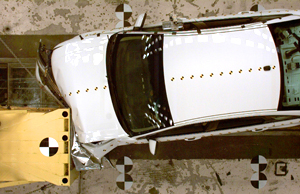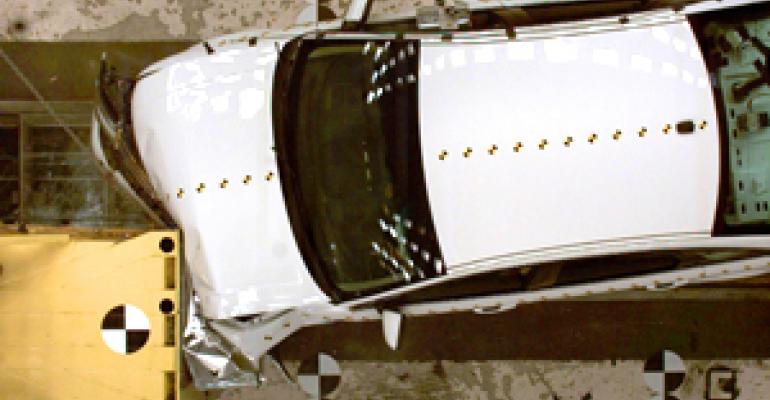
A European Union-funded research project is using donated dead bodies, elaborately constructed dummies and complex computer research to create a digital model of the thorax – the upper body between the head and abdomen – to help build safer cars.
The three-and-a-half-year THOMO project, ending in 2013, will add its findings to projects conducted by the Global Human Body Models Consortium (GHBMC) focusing on other parts of the body.
Eight auto makers and safety supplier Takata are pooling their efforts to support the creation of minutely detailed digital models of humans of both genders. These will be used in computer simulations to help predict vehicle accidents’ impact on bodies of all shapes and sizes.
The thorax is a particularly important part of this work. When road accidents happen, injuries to the thorax often will kill a driver or passenger.
The “Analysis of Personal Injury Report,” published in France, estimates that 29.5% of road-accident deaths are caused by injuries in this part of the body, notably through rib cages being crushed and damage to soft tissue.
European scientists in the THOMO project have received E2.07 million ($2.82 million) from the EU to design a digital crash-test dummy of the human thorax. The design incorporates data culled from crash tests and laboratory analysis using real dead bodies, medical imaging, 3-D reconstruction and digital modeling.
THOMO research is conducted at several universities in Europe and at the European Center of Studies on Safety and Risk Analysis (CEESAR), based in Nanterre, France.
The GHBMC, a consortium that includes Chrysler, General Motors, Honda, Hyundai, Nissan, PSA Peugeot Citroen, Renault and Toyota, sponsors the research by THOMO and universities in the U.S., Canada and South Korea.

THOMO, an acronym for “Development of a Finite Element Model of the Human Thorax and Upper Extremities,” also has been working with the Center for Applied Biomechanics at the University of Virginia in the U.S. to develop its digital model of the thorax.
CEESAR biomechanics specialist Pascal Baudrit tells WardsAuto: “One difficulty is assembling all these parts. On one hand you have hard tissues (such as bone) and on the other you have a lot of soft tissue (such as muscles and organs). It is very difficult to understand what happens with soft tissue in an accident.
“Ribs are also a tricky subject; they are easily broken, and THOMO researchers have been looking hard at their structure.”
The complexity of the thorax underscores the inadequacy of conventional crash-test dummies.
A recent project report says it “consists of more than 500,000 deformable elements including the complete rib cage, the inner organs and the muscles.”
Some of the work in making a digital model of the thorax has involved cadavers selected and used with scientific and ethical committees’ approval.
THOMO scientists started with a clinical CT scan of donated human corpses to map the rib-cage area of the thorax, including ribs, sternum, cartilage and vertebrae. A 3-D laser scan then was applied to each rib.
A micro-CT then scanned 1.6-in. (40-mm) segments along the ribs, including cortical bone and less-dense trabecular bone. The new data is critical for designing safer cars, because it helps auto makers better understand “the mechanical behavior of the rib cage and rib fracture mechanisms,” THOMO researchers say.
This information has been refined by more work with donated cadavers subjected to simulated accidents, with sensor gauges measuring strains on rib cages, including side-impact accidents and airbag deployment.
More-detailed research involves the impact of accidents on shoulders, which are particularly complex in structure. THOMO scientists will model shoulder muscles’ attachments and how they act in extreme motions using data culled from a filmed autopsy.





